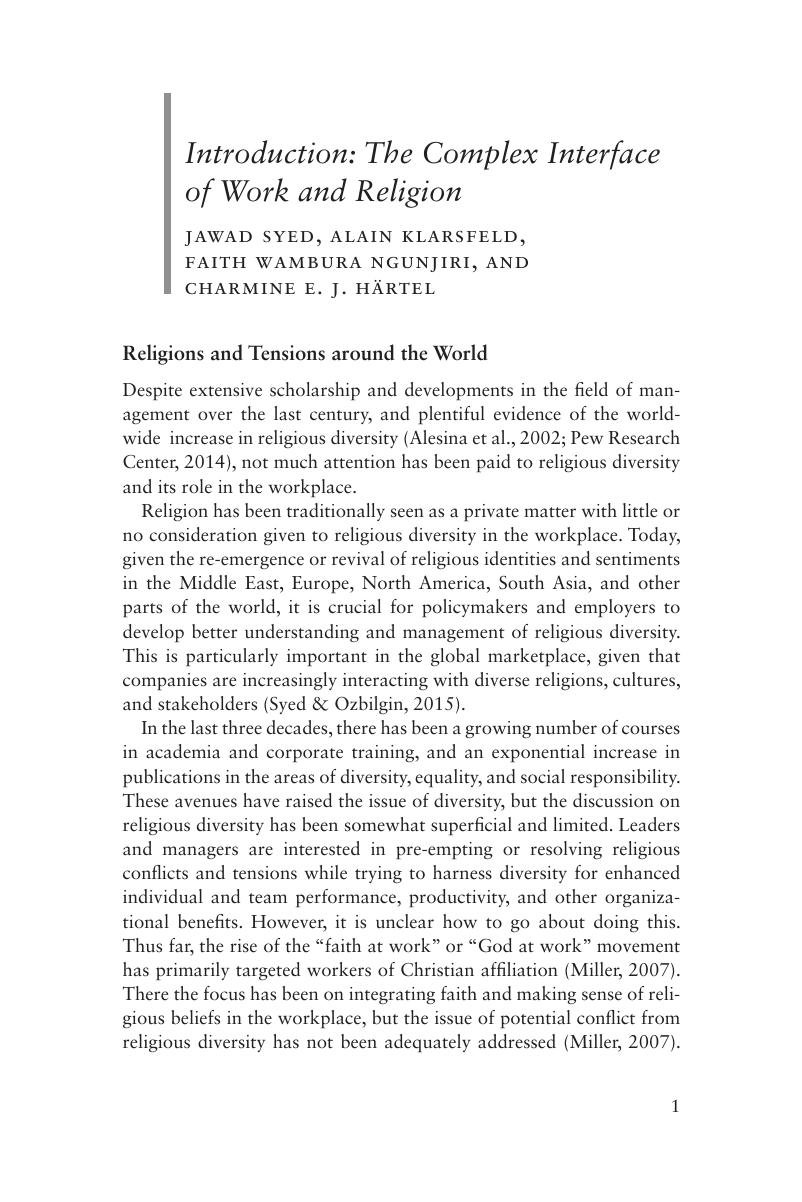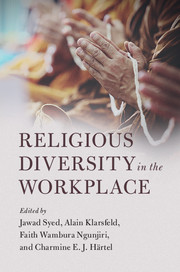Book contents
- Religious Diversity in the Workplace
- Religious Diversity in the Workplace
- Copyright page
- Contents
- Figures
- Tables
- Boxes
- Contributors
- Introduction: The Complex Interface of Work and Religion
- Part I General Frameworks and Sources of Reflection
- Part II Religious Approaches
- Part III Regional Approaches
- Part IV Organizational Approaches
- Index
- References
Introduction: The Complex Interface of Work and Religion
Published online by Cambridge University Press: 15 December 2017
- Religious Diversity in the Workplace
- Religious Diversity in the Workplace
- Copyright page
- Contents
- Figures
- Tables
- Boxes
- Contributors
- Introduction: The Complex Interface of Work and Religion
- Part I General Frameworks and Sources of Reflection
- Part II Religious Approaches
- Part III Regional Approaches
- Part IV Organizational Approaches
- Index
- References
Summary

- Type
- Chapter
- Information
- Religious Diversity in the Workplace , pp. 1 - 34Publisher: Cambridge University PressPrint publication year: 2017
References
- 2
- Cited by



